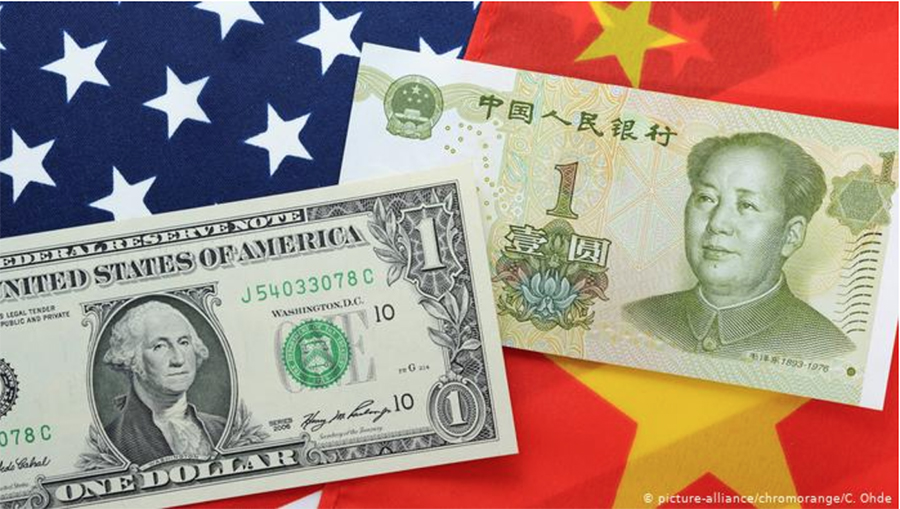China allowed its currency to drop sharply on Monday to the weakest level in more than a decade, prompting the Trump administration to take the historic step of labeling China a currency manipulator.
China also announced its companies have halted purchases of American agricultural goods.
The escalation comes after President Donald Trump vowed last week to impose 10 percent tariffs on $300 billion worth of Chinese imports. Late last week, China vowed to retaliate.
On Monday, the U.S. Treasury accused Beijing of deliberately influencing the exchange rate between the yuan and the U.S. dollar to gain an “unfair competitive advantage in international trade” followed a sharp drop in the yuan against the dollar. The Chinese currency breached the 7-per-dollar level for the first time since 2008.
China’s central bank firmly rejected the U.S. Treasury’s designation. The People’s Bank of China (PBOC) said in a statement, “The United States disregards the facts and unreasonably affixes China with the label of ‘currency manipulators,’ which is a behavior that harms others and oneself,” the PBOC said in a statement on Tuesday, before adding: “The Chinese side firmly opposes this.”
The PBOC said it would not only “seriously undermine the international financial order, but also trigger financial market turmoil. It will also greatly hinder international trade and the global economic recovery, and ultimately will suffer from it.”
China priced the yuan’s reference rate at 6.9683 to the dollar, a hair above the target 7:1 ratio to the US dollar. Although that was the weakest level for the yuan in 11 years, many Wall Street investors feared China would price the yuan below that psychological 7:1 barrier.
Investors feared the label would eliminate China’s incentive to keep the yuan above the 7:1 ratio to the dollar, setting off a currency war with the U.S. A further devaluation of the yuan could ease the burden of America’s tariffs on China. Wall Street fears a steep drop in the yuan could escalate the trade war, prompting the U.S. to raise its tariffs on China.
U.S. stocks posted their worst day of 2019 on Monday, with the Dow plunging 767 points. The Nasdaq was the worst hit, because tech stocks would be hit particularly hard by an escalation in the trade war.
The new tariffs, which are scheduled to go into effect on September 1, would target everything from apparel and footwear to electronics such as smartphones. Previous rounds were largely shielded from finished goods.














